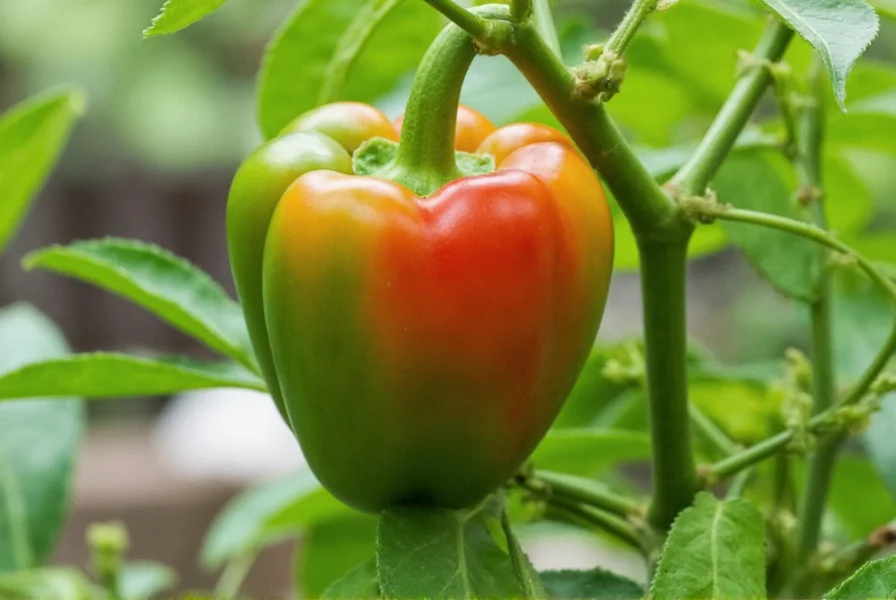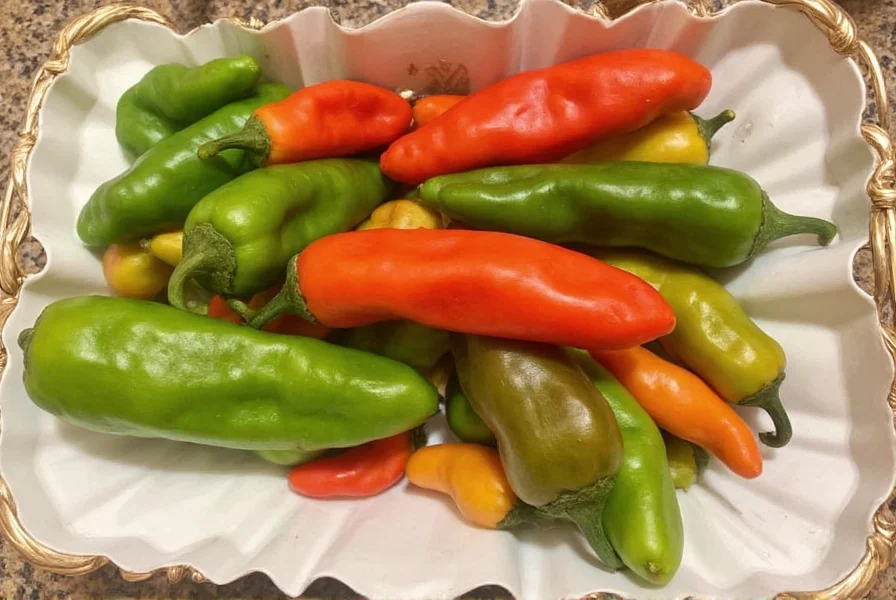For gardeners seeking reliable pepper production, Pepper Annie stands out as an exceptional choice among sweet bell pepper varieties. This hybrid cultivar (Capsicum annuum) was developed specifically to address common challenges faced by pepper growers, combining desirable flavor characteristics with robust growing traits that make it accessible even for beginners. Unlike many traditional bell peppers that require lengthy growing seasons, Pepper Annie reaches maturity in approximately 65-70 days from transplanting, allowing gardeners in shorter-season climates to enjoy a successful harvest.
Key Characteristics of Pepper Annie Peppers
Pepper Annie produces blocky, four-lobed fruits measuring 3-4 inches in diameter with walls reaching 0.3 inches thick. The peppers begin as glossy green and gradually mature to a deep, vibrant red, though they can be harvested at either stage depending on desired flavor profile. When harvested green, they offer the classic bell pepper taste with mild bitterness, while fully ripened red peppers develop exceptional sweetness with sugar content reaching up to 8 Brix.

One of the most notable features distinguishing Pepper Annie from standard bell peppers is its consistent fruit set even during periods of temperature fluctuation. While many pepper varieties struggle with blossom drop when temperatures exceed 90°F (32°C) or fall below 60°F (15°C), Pepper Annie maintains reliable fruit production across a wider temperature range, making it suitable for diverse growing regions.
Growing Requirements and Cultivation Tips
For optimal growth, plant Pepper Annie in well-draining soil with pH between 6.0-6.8, amended with organic matter. These peppers thrive in full sun (minimum 6-8 hours daily) and require consistent moisture—approximately 1-2 inches of water per week. Mulching around plants helps maintain soil moisture and temperature while reducing weed competition.
Start seeds indoors 8-10 weeks before your last expected frost date, maintaining soil temperatures between 75-85°F (24-29°C) for best germination. Transplant seedlings outdoors when daytime temperatures consistently exceed 65°F (18°C) and nighttime temperatures stay above 55°F (13°C). Space plants 18-24 inches apart in rows 30-36 inches apart to ensure adequate air circulation.
| Growing Parameter | Pepper Annie Requirements | Standard Bell Pepper Requirements |
|---|---|---|
| Days to Maturity | 65-70 days | 70-85 days |
| Disease Resistance | Tobacco Mosaic Virus, Bacterial Leaf Spot | Limited resistance |
| Temperature Tolerance | 55-95°F (13-35°C) | 65-85°F (18-29°C) |
| Yield per Plant | 25-35 peppers | 15-25 peppers |
Disease Resistance and Pest Management
Pepper Annie's most significant advantage over conventional bell peppers lies in its enhanced disease resistance package. This variety demonstrates strong resistance to Tobacco Mosaic Virus (TMV) and multiple strains of Bacterial Leaf Spot (BLS), two of the most devastating diseases affecting pepper crops. These resistance traits significantly reduce the need for chemical interventions, making Pepper Annie an excellent choice for organic gardening practices.
While highly resistant to common pepper diseases, growers should still implement good cultural practices to prevent potential issues. Rotate crops annually to avoid soil-borne pathogens, avoid overhead watering to minimize leaf moisture, and remove any infected plant material promptly. Common pests like aphids and pepper weevils can be managed with insecticidal soaps or neem oil applications when detected early.
Harvesting and Storage Techniques
Harvest Pepper Annie peppers when they reach full size (approximately 3-4 inches in diameter) and feel firm to the touch. For green peppers, harvest when they develop their characteristic blocky shape and glossy appearance. For sweeter red peppers, allow fruits to remain on the plant until they achieve full color change. Use sharp scissors or pruning shears to cut peppers from the plant, leaving a short stem attached to prevent damage to the plant.
Properly harvested Pepper Annie peppers store exceptionally well. Keep unwashed peppers in the crisper drawer of your refrigerator for up to 2-3 weeks. For longer preservation, consider roasting and freezing, pickling, or dehydrating excess harvest. The thick walls of Pepper Annie peppers make them particularly well-suited for stuffing, roasting, and grilling applications where structural integrity matters.

Culinary Applications and Flavor Profile
The thick, crisp walls and exceptional sweetness of mature red Pepper Annie peppers make them ideal for fresh applications like salads, crudités, and sandwiches. Their consistent shape and size also make them perfect for stuffing with rice, grains, or cheese mixtures. When cooked, these peppers develop complex caramelized flavors that enhance dishes like fajitas, stir-fries, and roasted vegetable medleys.
Unlike some bell pepper varieties that can develop bitterness when cooked, Pepper Annie maintains its sweet profile through various cooking methods. The high sugar content facilitates excellent caramelization, making these peppers particularly valuable for applications requiring roasted or grilled peppers. Home canners appreciate Pepper Annie's thick walls for pickling, as they maintain texture better than thinner-walled varieties.
Why Choose Pepper Annie Over Other Varieties
Gardeners selecting Pepper Annie over standard bell peppers benefit from several key advantages. The earlier maturity allows for harvest before peak pest seasons in many regions, while the disease resistance package reduces crop losses significantly. The consistent fruit set means more reliable yields even in challenging growing conditions, and the thick walls provide better storage characteristics and culinary versatility.
Commercial growers particularly value Pepper Annie for its uniform fruit size and shape, which improves packing efficiency and marketability. The variety's adaptability to both field and high tunnel production systems makes it a flexible choice for diverse farming operations. For home gardeners, the combination of ease of cultivation, high productivity, and excellent flavor makes Pepper Annie a standout choice among sweet pepper varieties.
When is the best time to plant Pepper Annie peppers?
Plant Pepper Annie seedlings outdoors after your last expected frost date when soil temperatures consistently reach at least 60°F (15°C). In most regions, this falls between late spring and early summer. Start seeds indoors 8-10 weeks before transplanting for best results.
How do I know when to harvest Pepper Annie peppers?
Harvest green Pepper Annie peppers when they reach 3-4 inches in diameter and feel firm. For sweeter red peppers, allow them to remain on the plant until they develop their full red color. The peppers should feel heavy for their size and have a glossy appearance when ready for harvest.
What makes Pepper Annie different from regular bell peppers?
Pepper Annie matures earlier (65-70 days vs 70-85+ days), produces higher yields, and has superior disease resistance compared to standard bell peppers. Its thick walls provide better storage and culinary versatility, while its temperature tolerance allows for more reliable fruit set in varying climate conditions.
Can Pepper Annie peppers be grown in containers?
Yes, Pepper Annie adapts well to container growing. Use pots at least 5 gallons in size with adequate drainage. Container-grown plants require more frequent watering and feeding but can produce excellent yields when provided with sufficient sunlight and proper care.
Are Pepper Annie peppers suitable for canning and preserving?
Yes, the thick walls of Pepper Annie peppers make them particularly well-suited for canning, pickling, and freezing. Their firm texture holds up better during preservation processes compared to thinner-walled varieties, maintaining quality and structure in preserved products.










 浙公网安备
33010002000092号
浙公网安备
33010002000092号 浙B2-20120091-4
浙B2-20120091-4